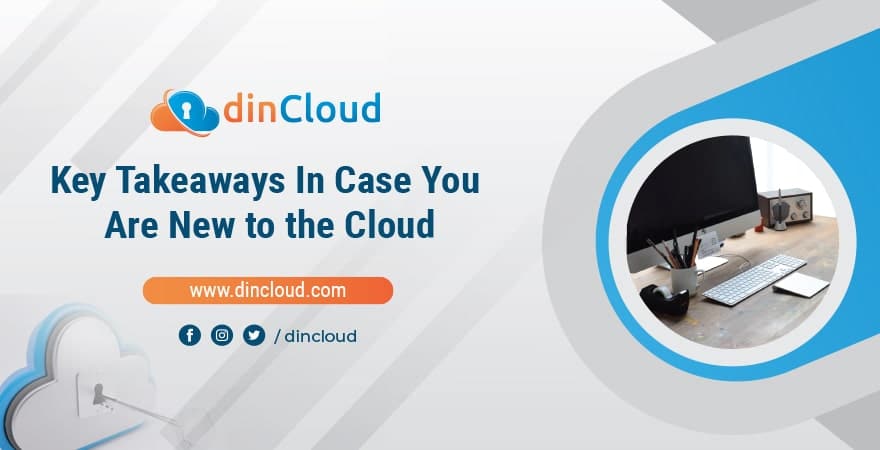The Covid-19 pandemic has made Cloud Computing one of the most notable buzzwords lately. However, not everyone is familiar with the concept, or how it works to deliver value, flexibility and versatility.

In this post, we will focus our discussion on some of the most basic factors that you need to be mindful of, in case you are contemplating a move to the Cloud. Some of these points may also help in case you have already embarked on the cloud journey, so to say.
Do I Really Need the Cloud?
Spoiler alert, the answer to this question is likely to be in the affirmative in most of the cases. However, what’s more important to answer at the most preliminary stage of your cloud transition is whether you really need it in the first place at all.
Although cloud powered solutions, such as the ones being offered by Cloud Service Provider (CSP) dinCloud, have the capability to fulfill a wide range of use cases, the same may not be true for each and every deployment scenario.
Properly answering this question will at the very least, put you on the right “digital track”, whether it’s the pandemic or any similar unforeseen set of circumstances. If the answer to this question is yes, then lets delve deeper.
Which Deployment Model Do I Choose?
Broadly speaking, you can deploy cloud solutions in three different ways. The first option is to leverage the cloud infrastructure of a public Cloud Service Provider (CSP) like dinCloud. Then, on the other extreme is a private or on-premise cloud arrangement.
In addition to these extremes, then there is the sweet spot or middle ground between these two models, which is often referred to as a hybrid cloud model. A hybrid model of cloud deployment allows you to enjoy the “best of both worlds”, if done properly.
A Cloud First or BC / DR Approach
Down the road, even this will be a very fundamental question that you will have to answer sooner than later. In case you want to go cloud first, then you will have to shift most of your enterprise data over the Cloud, and its better not to delay this step.
Another possibility can be the use of cloud technologies or solutions as a Business Continuity (BC) as well as Disaster Recovery (DR) fallback. If that is the case, you have much greater choice on what to do with your enterprise data.
If you choose the Cloud initially for BC and DR, then only the mission critical data needs to go in the Cloud, or just the regular backups of the same. If you want to go cloud first, then you may also have to re-configure legacy apps as well.
What’s the Pricing Model?
As you are choosing the Cloud for the mid to long term, you will need to give serious thought to its financial viability. While the Cloud saves you from Capital Expenditures (CapEx), you still need to draw a cost comparison of various cloud providers.
This is one area where the flat rate pricing model of dinCloud is worth a mention, as it takes all the guesswork out of the equation. Then, there may also be the element of hidden costs, which by the way does not exist if you choose dinCloud as your cloud provider.
Do My Legacy Apps Fit In
This will be a major issue to address when moving to the Cloud. If you have customized legacy apps, there is a good chance they may not directly integrate with the cloud. However, this gap is bridged by technologies such as containerization or PaaS.
Platform as a Service or PaaS provides the infrastructure and enabling environment to developers, which they can leverage to make legacy apps compatible with the Cloud. In that case, you will have to factor in the timelines for attaining this compatibility.
Conclusion
In this post, we have focused our discussion on some of the very basic elements when considering a move to the Cloud. Still, its good if you also gauge the laid down compliance standards for your respective industry and whether your cloud provider meets them.
In case you got stuck at any of the above points, or have some other questions about how our cloud solutions work, feel free to Contact dinCloud.


